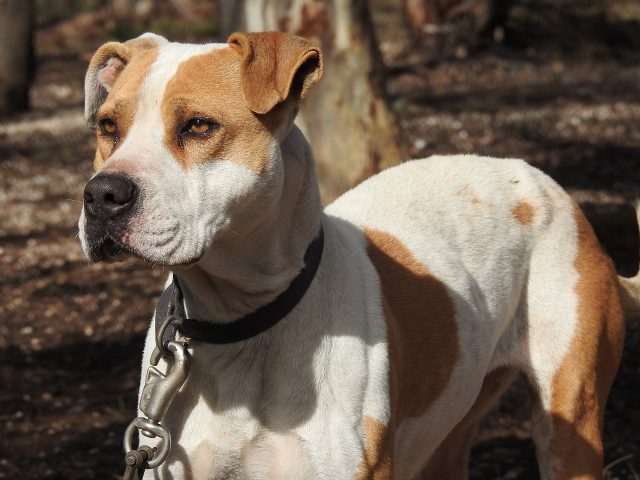Dogs are curious and intelligent creatures, and their behavior can sometimes be puzzling, especially when they are left alone. While we often wonder what our furry friends do in our absence, advancements in pet monitoring technology have revealed some surprising and strange activities. These behaviors can range from amusing to concerning, providing insights into their needs, emotions, and instincts. This article explores eight strange things your dog might do when you’re not home. Understanding these behaviors can help you create a safer, more comfortable environment for your dog and strengthen your bond when you are together.

1. Watching Out the Window
One common behavior dogs exhibit when left alone is spending a lot of time watching out the window. This activity might seem harmless, but it can indicate that your dog is feeling anxious or bored. Dogs are naturally curious and enjoy observing the outside world. However, constant vigilance can also be a sign of separation anxiety. They might be looking for signs of your return or trying to entertain themselves by watching the activity outside. Providing engaging toys, such as puzzle feeders, and creating a comfortable space away from windows can help alleviate this behavior.
2. Rearranging or Destroying Items
Many dogs engage in destructive behaviors when left alone, such as chewing furniture, tearing up cushions, or moving items around the house. This can signify boredom, anxiety, or lack of exercise. Dogs have a natural instinct to chew and explore, and when they are not given enough mental and physical stimulation, they might turn to your belongings for entertainment. To prevent this, ensure your dog gets plenty of exercise before you leave and provide them with durable chew toys and interactive activities to keep them occupied.
3. Howling or Barking Excessively
Some dogs express their distress through vocalizations, such as howling or barking excessively when they are left alone. This behavior can be particularly problematic if you live in close proximity to neighbors. Excessive vocalization is often a sign of separation anxiety or boredom. Dogs use howling and barking to communicate and might be trying to call you back or express discomfort. Training your dog to feel more comfortable alone, using calming aids, or consulting with a veterinarian or behaviorist can help address this issue.
4. Pacing or Circling
Pacing or circling is another behavior dogs might exhibit when feeling anxious or stressed. This repetitive motion can be a way for dogs to cope with their emotions and release pent-up energy. If your dog paces or circles excessively when you are not home, it might indicate separation anxiety or compulsive behavior. Ensuring your dog gets plenty of exercise, providing mental stimulation, and creating a calm environment can help reduce this behavior. In severe cases, consulting a veterinarian or animal behaviorist may be necessary.
5. Hiding or Seeking Comfort in Small Spaces
Some dogs respond to their owner’s absence by hiding or seeking comfort in small, enclosed spaces. This behavior can be a way for dogs to feel safe and secure when they are alone. Dogs might hide under furniture, in closets, or in other quiet spots in the house. Creating a designated safe space for your dog, such as a crate with comfortable bedding, can help them feel more secure. Ensuring this space is associated with positive experiences can make it a comforting retreat for your dog.
6. Raiding the Trash
Dogs are naturally scavengers; when left alone, they might be tempted to raid the trash for food or interesting items. This behavior can be messy and potentially dangerous if your dog ingests something harmful. To prevent this, ensure your trash bins are securely closed or placed in inaccessible areas to your dog. Providing appropriate chew toys and keeping food items out of reach can also help reduce the temptation to scavenge.
7. Engaging in Self-Soothing Behaviors
Some dogs engage in self-soothing behaviors when left alone, such as licking their paws or chewing on their fur. While occasional grooming is normal, excessive licking or chewing can indicate anxiety, boredom, or a medical issue such as allergies or skin irritations. If you notice your dog engaging in these behaviors frequently, it’s important to consult your veterinarian to rule out any underlying health concerns. Providing mental stimulation and ensuring your dog has plenty of exercise can also help reduce anxiety-related self-soothing behaviors.
8. Acting Differently When You Return
One of the strangest behaviors is how dogs sometimes act differently when their owners return home. Some dogs might greet you with excessive excitement, jumping, barking, or even urinating out of excitement or anxiety. Others might appear indifferent or even hide when you come back. These behaviors can be signs of separation anxiety, overattachment, or a response to your departure and return rituals. Establishing a calm and consistent routine when you leave and return can help your dog feel more secure and reduce these extreme reactions.

Understanding your dog’s strange behaviors when you are not home can provide valuable insights into their emotional and physical well-being. Watching out the window, destroying items, excessive vocalization, pacing, hiding, raiding the trash, self-soothing, and acting differently upon your return are all signs that your dog is trying to cope with your absence. Addressing these behaviors through exercise, mental stimulation, training, and creating a secure environment can help your dog feel more comfortable and reduce anxiety. Recognizing and responding to these signs ensures a healthier relationship with your furry friend, making your time together even more enjoyable.
 Toledo, United States.
Toledo, United States.
